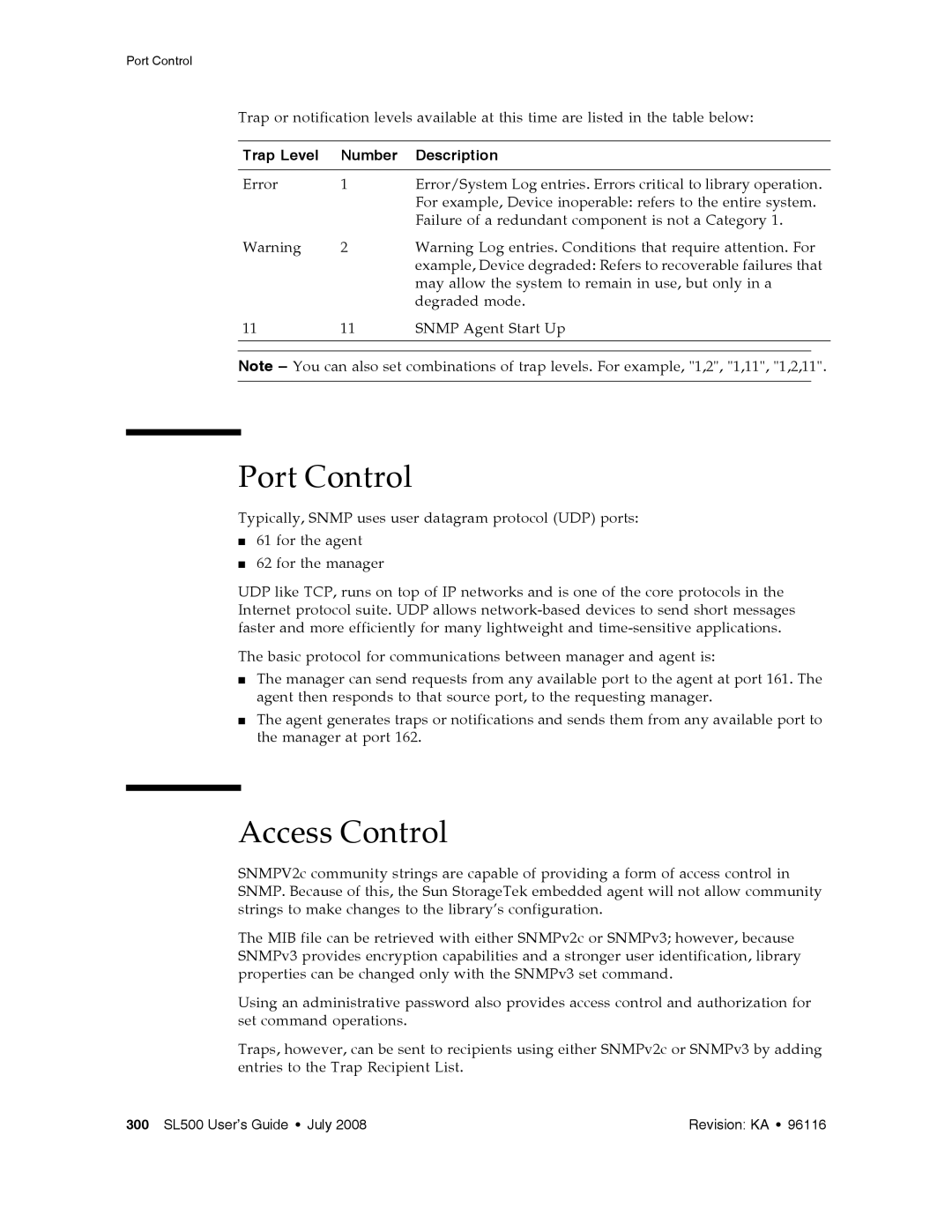
Port Control
Trap or notification levels available at this time are listed in the table below:
Trap Level | Number | Description | |
|
|
|
|
Error | 1 | Error/System Log entries. Errors critical to library operation. | |
|
| For example, Device inoperable: refers to the entire system. | |
|
| Failure of a redundant component is not a Category 1. | |
Warning | 2 | Warning Log entries. Conditions that require attention. For | |
|
| example, Device degraded: Refers to recoverable failures that | |
|
| may allow the system to remain in use, but only in a | |
|
| degraded mode. | |
11 | 11 | SNMP Agent Start Up | |
|
|
|
|
|
|
|
|
Note – You can also set combinations of trap levels. For example, "1,2", "1,11", "1,2,11".
Port Control
Typically, SNMP uses user datagram protocol (UDP) ports:
■61 for the agent
■62 for the manager
UDP like TCP, runs on top of IP networks and is one of the core protocols in the Internet protocol suite. UDP allows
The basic protocol for communications between manager and agent is:
■
■
The manager can send requests from any available port to the agent at port 161. The agent then responds to that source port, to the requesting manager.
The agent generates traps or notifications and sends them from any available port to the manager at port 162.
Access Control
SNMPV2c community strings are capable of providing a form of access control in SNMP. Because of this, the Sun StorageTek embedded agent will not allow community strings to make changes to the library’s configuration.
The MIB file can be retrieved with either SNMPv2c or SNMPv3; however, because SNMPv3 provides encryption capabilities and a stronger user identification, library properties can be changed only with the SNMPv3 set command.
Using an administrative password also provides access control and authorization for set command operations.
Traps, however, can be sent to recipients using either SNMPv2c or SNMPv3 by adding entries to the Trap Recipient List.
300 SL500 User’s Guide • July 2008 | Revision: KA • 96116 |
